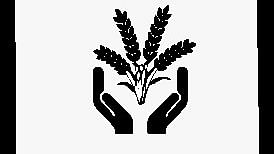
Credit: DH Illustration
Food inflation, driven by supply chain disruptions, adverse climatic conditions, and rising transportation expenses, has compelled the RBI and the Union government to implement effective measures for regulation. Despite favourable harvest conditions for farmers this season and government-imposed food export controls, domestic rice prices continue to rise. Amid these soaring rice prices, the Government of India introduced nationwide availability of ‘Bharat Rice’ at Rs 29 per kg on February 9. With retail rice prices soaring approximately 14.5 per cent in the past year, this move significantly eases the burden on middle- and lower-income household budgets. Despite being reproved by opposition parties, labelling the initiative as an election tactic, ‘Bharat Rice’ has been positively welcomed by the markets. The long-term consequences and feasibility of this initiative are, however, a question to ponder.
What is Bharat Rice?
‘Bharat Rice’ is part of the Union government’s effort to ensure food security for ordinary consumers. In its first phase, NAFED, NCCF, and Kendriya Bhandar have taken on the responsibility of selling Bharat rice through their offline and online platforms. For this purpose, the government has allocated 5 LMT of rice. While the government’s current focus is rice, they plan to extend this subsidised distribution to other items in the future. Last November, they began selling ‘Bharat Atta,’ the Bharat brand of wheat, at Rs 27.50 per kg. Additionally, the government has initiated the sale of Bharat Dal at Rs 60 per kg and onions at Rs 25 per kg. Reports indicate that currently, these items are being sold through 800 pickup vans and 2,000 outlets.
Several states in India were struggling with the exorbitant rise in rice prices when Bharat Rice was launched. The recent persistent increase in food grain prices, particularly rice, has adversely affected middle-class individuals who are not covered by the Targeted Public Distribution System (TPDS). For instance, according to data from the Department of Consumer Affairs, Mysuru recorded the highest rice price at Rs 61.0 a kg (reference period: February 7–18), while Surat had the lowest rice price at Rs 33 a kg (February 3–16). With the introduction of ‘Bharat Rice’, people from many states can thus save a significant amount of money from their monthly budget. According to the study conducted, households in Mysuru can save Rs 160 for a 5kg packet and Rs 320 for a 10 kg packet of Bharat rice. As claimed by the government, with the implementation of this scheme, people living below the poverty line in India can save Rs 1,500 to Rs 2,000 monthly on their food expenses.
The introduction of ‘Bharat Rice’, particularly ahead of the elections, has prompted non-ruling political parties to question its underlying political motivation. Critics argued that this might be a strategic move by the ruling party to influence voters’ sentiments, especially targeting those who heavily consider rice as their staple food. Such populist measures, aimed at appealing to voters during elections, are a routine global phenomenon adopted by governments as part of their strategy to maintain or regain power. Welfare measures like these are plausible for influencing poor and middle-class households, changing their choices and perceptions. The upcoming Lok Sabha elections add a political dimension to the introduction of Bharat Rice. These kinds of initiatives can have a considerable impact on public opinion as well as on shaping voting results.
Utilising Bharat Rice as a tactic, particularly during the upcoming elections, need not be regarded as a political tool, as the bottom line of this argument lies in the long-term commitment and employment of these interventions. The mechanisms used by the ruling party to influence voters through such short-term arbitration might not persist.
Challenges
The Union government’s policies so far have refrained from providing financial assistance. Fund allocations to popular schemes like MGNREGS, several social security schemes, subsidies, etc. have been seeing a declining trend. However, when it comes to Bharat Rice, the government has confused their stakeholders regarding short-term and long-term commitments towards sustainability and resource allocations. These types of actions have put pressure on taxpayers by raising suspicions about the government’s goals and programmes in the past as well as in the future.
This issue can be more critical when it comes to addressing the farmers who produce Bharat Rice and the market where there is a gap between the production and the distribution price. The government’s justification regarding these concerns is crucial. Given that middle- and lower-income households make up a significant portion of consumers in India, the introduction of subsidised items is bound to have a substantial impact on all stakeholders, potentially leading to price distortions and various long-term consequences.
As a political strategy, when the Union government introduces such a scheme, non-ruling party state governments may also be inclined to adopt similar initiatives to sway voters. According to media reports, the Kerala government has already initiated discussions about introducing “K Rice” to compete with Bharat Rice in the market. The interplay between these schemes and their impact on normal market operations requires thorough scrutiny. Moreover, it is essential to address the difference between the price at which NAFED procures Bharat Rice (Rs 18.59) and its market price (Rs 29). The government is responsible for clarifying this price gap.
The ‘Bharat Rice’ initiative signifies a crucial stride in tackling food affordability and accessibility concerns in India, especially amid escalating food prices and economic adversities. Nevertheless, the triumph of the initiative depends on efficient implementation, transparency, and addressing concerns regarding its long-term viability and repercussions on farmers and market dynamics. The government should instead address the issues of food security and food shortages in both rural and urban areas by bridging the gap between production, distribution, access, and sustainability. Allocation of funds
for sustainable farming practices, supporting small-scale farmers, and investing in agriculture must be the most timely remedy for protecting the agricultural sector.
(The writers are assistant professors in the department of economics at Christ (deemed to be a university), Bengaluru)